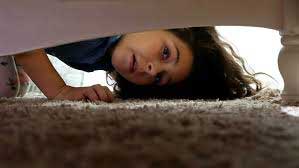Where Do Bed Bugs Hide? Once you discover the presence of bed bugs in your home, do all you can to get rid of them as soon as possible. The reason for quick action is because as time goes on you will have a more serious infestation. When an infestation increases the cost to treat your home also increases.
Even with minor infestations, finding bed bugs can be quite challenging. This is because a good deal of other tiny insects can very easily be mistaken for bed bugs. The importance of eliminating them as early as possible during an infestation is of top priority. Any kind of delayed action means a more serious infestation.
Where Do Bed Bugs Hide? To be able to completely eliminate bed bugs, it is important to properly identify them and their possible hiding spots. To properly identify them, physical signs of their presence should be sought for rather than their effects on human beings. As an example, do not look for bites on the skin while establishing the presence of bed bugs. This is because while most people do not react to bites from bed bugs, those who do usually find it difficult differentiating bed bug bites from rashes, hives and bites from other insects such as mosquitoes and chiggers.
Physical Signs Include
- Tiny dark spots that indicate their excreta or blood wastes,
- Reddish or rust-like stains that occur when they get crushed,
- Pale yellow spotting indicative of skin shed during the transition of their nymphs,
- Tiny eggs and nearly invisible eggshells,and ultimately
- Live bugs.
With a minor infestation, bed bugs can be found on the bed, in the spaces within the mattress, around the piping, and seems of the mattress, and on the head board. However, with a severe bed bug infestation, they can be found in the following places because they are tiny enough to fit into them:
- Joints of tables and wardrobes,
- Sutures of sofas, cushions and curtains,
- Screw heads,
- The wall base of the ceiling,
- Underneath wallpapers and loose panels, and
- The edges of electrical fixtures.
How Bed Bugs Behave
Finding bed bugs in order to control their spreading would be really difficult without an understanding of their reproductive behaviors, diets and choice of habitat.
Reproductive Behaviors of Bed Bugs
It takes roughly a month for the egg of a bed bug to fully develop into an adult bug through six growth stages. For each stage, the bug must feed on blood for multiple times and shed its skin before it can move to the next stage of its development. Both male and female bugs must feed fortnightly to be able to mate and produce eggs while each female bug can lay up to three eggs every day and up to 500 eggs in her entire lifetime of nearly a year.
Bed Bug Diet
Bedbugs feed majorly on human blood but may sometimes feed on the blood of other animals like birds and mammals with each feeding lasting up to 12 minutes. They feed mostly at night and can move through long distances in search of food.Their adults and bigger nymphs usually pass out blood remains of their previous meals while they take fresh meals.
Bed Bug Habitats
Bedbugs can survive anywhere as long as their hosts can survive there too. However, they die at temperatures above 44ºC but can survive well at temperatures below 10ºC. Although tropical bed bugs (Cimex Hemipterus) require higher temperatures for survival, bugs can be eliminated by efficiently heating up the spaces where they are found. Read More…





